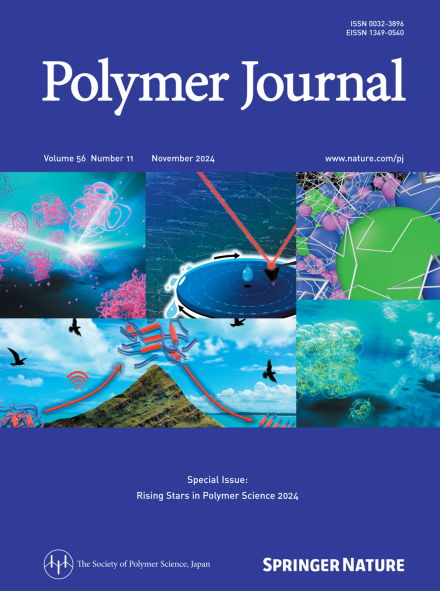硅氧基取代蒽醌作为可见光自由基聚合的I型光引发剂
IF 2.7
4区 化学
Q3 POLYMER SCIENCE
引用次数: 0
摘要
在可以用紫外-可见发光二极管激活的光引发剂中,I型光引发剂通常含有硫、氮和磷,可能影响人类健康和环境,而II型光引发剂通常只含有碳、氢和氧,如蒽醌衍生物,但需要共引发剂。因此,不含硫、氮和磷的I型光引发剂是非常理想的。在我们追求这样的光引发剂的过程中,我们检查了不同的硅氧基蒽醌在405 nm照射下引发自由基光聚合的能力,发现一些在没有共引发剂的情况下实现了高转化率。通过分析光解产物、电子自旋共振光谱和同位素标记实验,探讨了引发机理。1取代的硅氧基化合物作为I型光引发剂,产生异丙基自由基作为引发物。这些化合物是少数已知的具有蒽醌骨架的I型光引发剂,对405 nm可见光敏感。本研究的发现有助于设计干净的引发剂,不含其他I型引发剂中常见的硫、氮和磷。以硅氧基取代的蒽醌类为I型光引发剂,对丙烯酸酯单体的可见光自由基聚合进行了评价。建立了结构-活性相关性,并对观察到的活性趋势提出了机制解释。异丙基自由基是由含有1位硅氧基的化合物生成的,并作为起始物质。本文合成的1取代硅氧基蒽醌是少数具有蒽醌骨架并对可见光(405 nm)敏感的I型光引发剂之一。本文章由计算机程序翻译,如有差异,请以英文原文为准。

Silyloxy-substituted anthraquinones as Type I photoinitiators for visible light-induced radical polymerization
Among the photoinitiators that can be activated using ultraviolet-visible light-emitting diodes, Type I photoinitiators often contain sulfur, nitrogen, and phosphorus and may affect human health and the environment, whereas Type II photoinitiators typically contain only carbon, hydrogen, and oxygen, as exemplified by anthraquinone derivatives, but require coinitiators. Hence, sulfur-, nitrogen-, and phosphorus-free Type I photoinitiators are highly desirable. In our pursuit of such photoinitiators, we examined the ability of different silyloxyanthraquinones to initiate radical photopolymerization upon irradiation at 405 nm and found that some achieved high conversion in the absence of a coinitiator. The initiation mechanism was probed by analyzing the photolysis products, electron spin resonance spectroscopy, and isotope labeling experiments. The 1-substituted silyloxy compounds acted as Type I photoinitiators, generating isopropyl radicals as the initiating species. These compounds are among the very few known Type I photoinitiators with an anthraquinone skeleton that are sensitive to 405 nm visible light. The findings of this study facilitate the design of clean initiators free of the sulfur, nitrogen, and phosphorus commonly present in other Type I initiators. Silyloxy-substituted anthraquinones were evaluated as Type I photoinitiators for the visible light-induced radical polymerization of an acrylate monomer. Structure–activity correlations were established, and a mechanistic explanation of the observed activity trend was proposed. Isopropyl radicals were generated from compounds with a silyloxy group at position 1 and acted as the initiating species. The 1-substituted silyloxy anthraquinones synthesized herein are among the few Type I photoinitiators that have an anthraquinone skeleton and are sensitive to visible light (405 nm).
求助全文
通过发布文献求助,成功后即可免费获取论文全文。
去求助
来源期刊

Polymer Journal
化学-高分子科学
CiteScore
5.60
自引率
7.10%
发文量
131
审稿时长
2.5 months
期刊介绍:
Polymer Journal promotes research from all aspects of polymer science from anywhere in the world and aims to provide an integrated platform for scientific communication that assists the advancement of polymer science and related fields. The journal publishes Original Articles, Notes, Short Communications and Reviews.
Subject areas and topics of particular interest within the journal''s scope include, but are not limited to, those listed below:
Polymer synthesis and reactions
Polymer structures
Physical properties of polymers
Polymer surface and interfaces
Functional polymers
Supramolecular polymers
Self-assembled materials
Biopolymers and bio-related polymer materials
Polymer engineering.
 求助内容:
求助内容: 应助结果提醒方式:
应助结果提醒方式:


